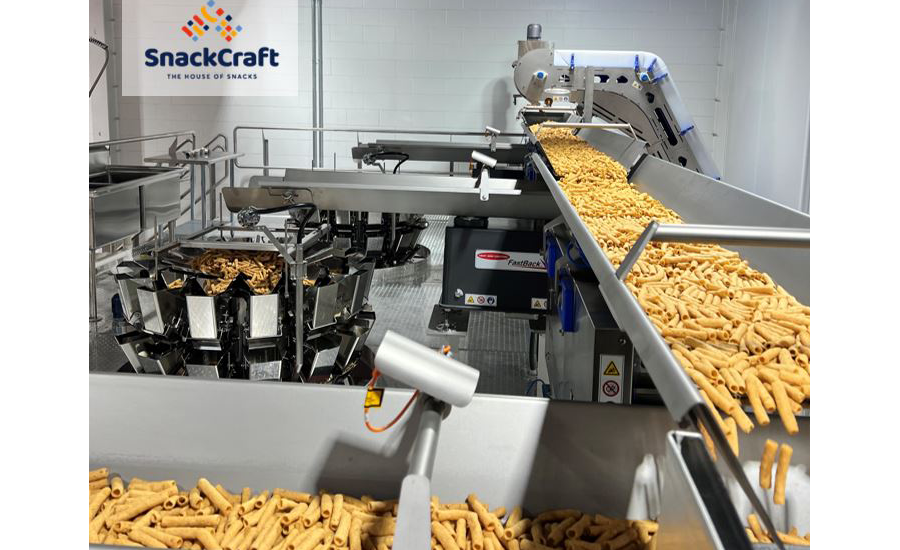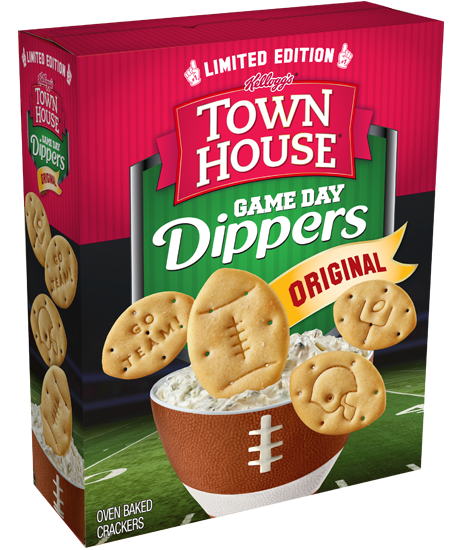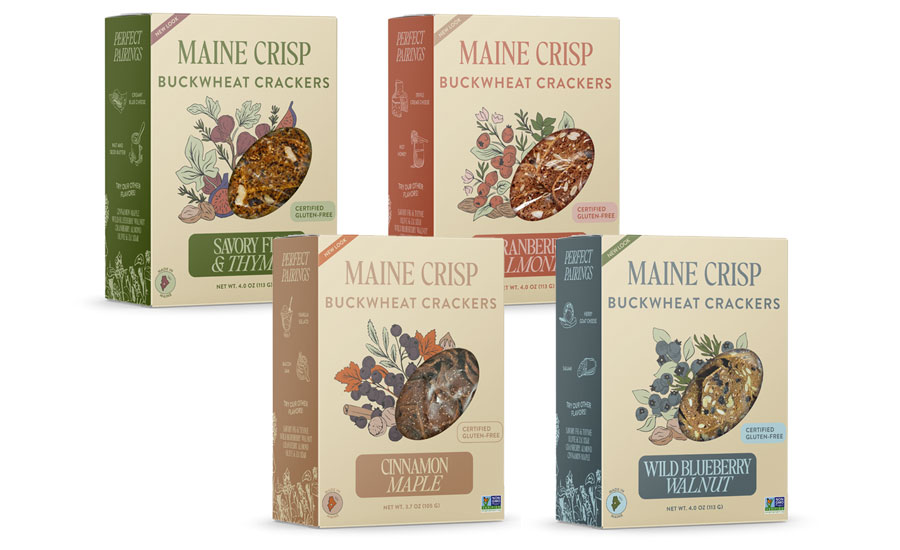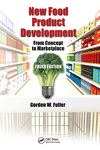Crackers category trends upwards
Crackers sales continue trending upwards, as people start hosting in-person gatherings again.

Courtesy of WHY? SNACKS
The Bottom Line:
- Crackers category is up in sales
- Better-for-you snacking has increased
- Hosting gatherings using crackers
The crackers category is doing well this year, which is unsurprising since more people are out and about now versus the past two years, and crackers are an easy snack to pack for “on-the-go.” At the same time, people are also either hosting or attending in-person gatherings more, at which crackers are an essential snack—after all, there can’t be a party without a charcuterie board or at least some crackers and dips
Market data
According to Chicago-based market research firm IRI’s data from the past 52 weeks, which ended on October 30, 2022, the crackers category brought in $8.947 billion in sales, with a 11.2% change versus the previous year.
In the “all other crackers” subcategory, which brought in a healthy $6.573 billion with a 10.7% increase from 2021, Mondelēz’s Nabisco brand leads the pack, with $1.397 billion in sales, up 7.9% from last year. Kellogg’s Cheez-It brand brought in $1.374 billion, with a 13.2% jump in sales from the previous year, and Campbell’s Pepperidge Farm brand brought in $1.172 billion, with a 12.4% increase in sales.
The “crackers with fillings” subcategory brought in $1.22 billion in sales, with an 11.2% increase from last year, and the Lance brand came in first in the category, with $354 million in sales and a 6% increase from 2021. Nabisco brought in $314 million in sales, with an 11.5% increase from last year, and Ferrero’s brands brought in $154 million, with a nice 30.6% increase.
The saltine crackers subcategory made $554 million in sales this year, with a 14.9% increase, and Nabisco’s saltine crackers brought in $361 million of that, with a 15.1% increase. Private label saltine crackers brought in $105 million in sales, with a 6.4% increase, and the Keebler brands brought in $50 million in sales, with a 20.9% increase from 2021.
Day-to-day business
“Unismack has seen significant growth over the last few years as the interest in ‘better-for-you’ snacking has steadily increased,” says Dimitrios Stratakis, group CEO and founder, Unismack & SnackCraft, Grand Rapids, MI. “Our unique capability to offer innovation and excellent products in this sector has been fuelling our growth as we have gained the trust of our customers and the consumer.”
Stratakis says that the business has experienced challenges during the pandemic.
“Naturally, we have not been immune to the challenges of COVID with an impact on our operations, logistics, demand fluctuations, and, lately, significant cost increases. Having said that, the underlying trends remain strong and that is why we decided to invest and expand our footprint in Grand Rapids with the establishment of SnackCraft LLC.”
He says that SnackCraft’s innovation team is developing solutions that cater for the latest trends in the cracker category.
“Our latest focus has been to create a range of keto crackers—a category that has seen significant growth and where good quality cracker products are very hard to find,” he explains. “Other categories we have focused our development on include vegan/vegetable-based crackers, premium cheese-based crackers, and more.”

In November 2022, SnackCraft started its operation in the U.S. with fried snacks and it is planning to install three more production lines by June 2023, Stratakis says.
“We are focusing on the following product categories: extruded, pellet, baked and fried snacks, tortilla chips, crackers, and pretzels. Our cracker capability in the U.S. will be available by end of January 2023 and will include pretzel-type cracker products. The underlying attributes of these products are that they are allergen-free and gluten-free, produced in a certified facility with a total production capacity of 55-60 million pounds per annum.”
Evan Wyss, founder/CEO, WHY? SNACKS, St. Petersburg, FL, says that although the company just launched in October, it is seeing high interest in its product, with many customers re-ordering 4-5 times within the company’s first month.
“The product we just launched is our keto Grain-Free Cheese Crackers,” he said. “They taste as good as the cheese crackers you grew up eating, only they're grain-free, gluten-free, keto-friendly, and [contains] 8g of protein and no seed oils.”
Wyss says that his own need motivated the creation of the crackers.
“I've always loved cheese crackers, but since going gluten-free in 2010 due to health reasons, I could never find a grain-free alternative that tasted remotely as good as I remembered—let alone one that was low-carb. A few years back, I decided I had to be the one to make it a reality. So far, we are getting great feedback from our customers. We spent over two years getting this product right, and I think consumers can tell,” he notes.
“Though we only launched in mid-October of 2022, the supply chain issues resulting from the pandemic certainly made our pre-launch R&D challenging, to say the least,” Wyss adds.

Carrie Foose, director of brand marketing, Kellogg’s Crackers, Battle Creek, MI, says that during the pandemic, Kellogg saw increased demand for its cracker brands, including Town House, Club Crackers, Toasteds, and Carr’s Crackers.
“Demand has remained elevated as consumers continue to entertain at home and can easily pair our portfolio of crackers with a wide array of meats, cheeses, jams, and spreads for their gatherings,” she says.
In August, Town House released its first-ever football-shaped crackers, just in time for the return of football, teaming up with football legend Desmond Howard to help spread the word. Howard also shared his “playbook” of cracker-dipping techniques and favorite dip recipes.
In addition, to round out the year, the brand created a variety of charcuterie board recipes with Kellogg’s Crackers and featured them on the back of limited-edition holiday-themed packaging.
“With all the hustle and bustle of holiday season, we understand how hosts tend to focus on bigger celebrations and may feel caught by surprise when smaller, unplanned moments pop up. Hosts can scan the QR code on the back of the limited-edition packaging, leading them to Kelloggs.com/SpreadJoy for even more charcuterie board recipes that fit the needs of any occasion,” Foose finishes.
Karen Getz, founder and president of Maine Crisp, Winslow, ME, says that during the pandemic, business has been “great, hard, fun, backbreaking, and ultimately hugely rewarding.”
“It is exactly what one should expect in trying to grow a successful food company. Thankfully, we have been growing steadily but all of the headwinds that consumers face in their own lives with inflation are ones we are dealing with at Maine Crisp. But we have not increased our prices and have chosen to absorb the increases to us at this time. We know it's tough out there and we want people to be able to enjoy our crisps at the end of a long day,” she says.
The brand is currently in the process of launching its newest flavor, Olive & Za’atar.

“I love olives and wanted to find the perfect match that would complement it. Middle Eastern foods are delicious and I wanted to do something with our newest product that would be unexpected, so after a lot of hours of testing, eating, testing, and eating, we chose Za’atar. It’s a spice mixture that includes the herb along with toasted sesame seeds, dried sumac, often salt, as well as other spices,” Getz elaborates.
“We are explorers at heart. We love to travel and eat different things everywhere we go. When we read about something that sounds delicious, we go online and buy to see what it tastes like,” she adds. “I think a small, growing company needs to be a team of curious people that love to learn. Our inspiration is not going to come from an expensive report from a research company but from eating at some funky restaurant or trying a new recipe we read about. Our secret weapon is being open to trying new things and never assuming something won't be delicious even if it sounds like it couldn't be.”
Carla King, director of marketing, Mary’s Gone Crackers, Reno, NV, says that its cracker sales have grown over the past year, but it has faced supply chain and labor challenges. Despite that, the brand has new offerings: Mary’s Gone Cheezee Vegan Cheese-flavored Crackers launched in August, with Cheddar and Cheese & Herb flavors.
“Consumers are seeking better-for-you snacks that are plant-based and/or vegan yet still deliver on taste. This was our challenge for [our] new offering and we believe we met the challenge,” she notes.
King adds that the effects the pandemic had (and continues to have) on demand, supply chain, and the labor market have impacted Mary’s Gone Crackers with increased costs.
“Our team has worked hard to find alternate suppliers. The team has also gotten creative with production support to ensure we can fulfill our orders in a timely manner,” she says.
Lori Schwartz, brand manager, Wasa, Barilla Group, Northbrook, IL, says that Wasa understands that the pandemic affected businesses across the globe.
“While we can’t share specific sales data, we immediately reacted to the COVID-19 pandemic by setting clear priorities and acting quickly. Our first priority was to guarantee the maximum safety of our people. We then aimed to guarantee the continuity of operations in all production sites, meeting rising demand to provide all of our markets with essential products.”
In September 2022, Wasa announced the launch of its new packaging that reflects a modern reinvention of the brand while staying true to its Swedish heritage.
“The new packaging was designed with qualitative data from real consumers that the brand collected. Consumers ranked the new packaging as the most motivating design due to elements such as its large, unique font style and vibrant pastel background, significantly outperforming Wasa’s previous packaging design. The packaging stood out to customers, making them feel happy, excited, enticed, energized and curious about the variety of ways they can use Wasa,” she explains.

“While Wasa crispbread is made with simple ingredients, the playful design conveys that Wasa is ‘healthy but fun’ and can be transformed into a variety of tasty, adventurous mini-meals with delicious toppings,” Schwartz adds.
Cracker trends
“When purchasing crackers or crispbread, consumers are often looking for a delicious, versatile base for a variety of mini-meals—or appetizers to share with friends,” says Schwartz. “Consumers are also increasingly seeking out wholesome, healthier options in the cracker aisle.”
“Wasa is consistently keeping an eye on consumer trends to ensure our offerings resonate with current buyers and their unique lifestyles. In 2022, Wasa released limited-edition hosting kits for Galentine’s Day and Friendsgiving—two moments focused on spending quality time with friends and perfect opportunities to create mini-meals with Wasa crispbread,” she comments.
“We also proactively collect consumer feedback on Wasa’s product and packaging to ensure our consumers’ wants and needs are top of mind when developing new products,” Schwartz finishes.
Stratakis says that as a business with global presence, SnackCraft is constantly monitoring trends and investing in research and development to meet market needs.
“Over the years, we have managed to succeed and progress by focusing on our three core company values: Innovation, Excellence, and Responsibility, [to] which we have stayed true throughout,” he said. “The principle of innovation; what we design, develop, and produce is not a copy but encompasses knowledge and diversity. The principle of excellence is that we seek perfection in what we do. We want to get it right, whether it's our production processes, quality standards or the way we operate. And finally, ‘Responsibility’ is about the interest, focus, and energy we spend so that what we do ends up having a net positive impact either on our people, our local community, the society, or the product qualities we deliver to the consumer.”
Wyss says that consumers want it all—and by that, he means they want something that's good for them without sacrificing taste.
“In terms of flavor, we think nostalgia is what people crave. Who wouldn't want to be reminded of their favorite foods growing up? That said, while they want it to taste like junk food, they want it low in carbs, grain-free, and completely natural,” he notes. “Sure, there certainly has been a shift towards cleaner, grain-free products. But, I think the biggest shift is from the better-for-you brands themselves, realizing that no one wants a snack that tastes like cardboard. While we love to keep up with what's current, we try to make things we'd actually enjoy ourselves.”
Similarly, Kellogg is always looking to innovate and deliver new experiences and flavors for its dedicated cracker fans, says Foose.
“For example, with [our] Club Crisps’ Wind Down Club, we collaborated with Amazon to extend the enjoyment of crackers into the evening by creating a curated playlist, along with streaming recommendations, perfect to unwind to for those solo occasions,” she says.


“Our innovation team is also always looking for trending flavor profiles to tap into to develop new crackers that will both pique consumer interest and taste delicious. Inspiration can come from anywhere—from monitoring social trends to consumer feedback—so stay tuned to see what we have in the works,” Foose shares.
Getz says that consumers are looking for flavors that are unique, nuanced, and taste good—they want ingredients that are easily recognizable and better-for-you, with nothing artificial.
“As a lifelong baker, former farmstead cheesemaker, and ardent believer in eating healthy, I wanted to create a product that showcased local nutritious ingredients like buckwheat. Buckwheat is naturally gluten-free and is chock full of fiber, vitamins, and amino acids. Consumers try our crisps and love them, whether they need to eat gluten-free or not. What has really resonated is a gluten-free product that is free of gums, starches, and extra sugar,” she adds.
“In early 2021, we launched our Savory Fig & Thyme crisp. It is our first dairy-free crisp and has quickly become our best seller. Our new Olive & Za’atar flavor will also be dairy-free, following this consumer preference,” Getz explains.
Likewise, King says that consumers are opting for better-for-you products, with some choosing low-carb, plant-based, whole grain, gluten-free, or other diets to provide health benefits to their lifestyle.
“This trend existed prior to the pandemic, yet has since accelerated with a greater awareness of the overall health and wellness connection to diet/eating/snacking habits,” she notes. “Consumers seem to be more nostalgic—seeking better-for-you options of products they enjoyed in their childhood.”
King says that the brand follows trends beyond the retail grocery industry.
“We see what consumers are doing/posting about on social media, what restaurants are serving (global flavors, fusion, etc.). Everyone at Mary’s Gone Crackers is encouraged to provide ideas and input about what they see on their grocery trips or when they are out,” she comments.
Challenges
Stratakis says that Unismack, originally based in Greece, has seen its fair share of crises, from the 2008 financial crisis, to the 2011 ‘Grexit’ crisis, to the pandemic, and now the war in Ukraine.
“Any crisis comes with unique challenges and opportunities, but at the end of the day as a business we have proven our resilience and adaptability. Our compass has always been our values and our global outlook,” he says.
“Regarding the pandemic, the immediate impact was on supply chain and global logistics and how we were able to deliver our products to our clients on time. This tested our relationship with our forwarders and led to challenges in the ‘just-in-time’ production/delivery model that we had in place for years. Our reaction was to work closely with our clients and our suppliers to change forecasting, lead times, and operations to cater for the increased complexity and cost of doing operations in such an environment,” Stratakis notes.
“Today we are faced with the Ukrainian war leading to the energy crisis and the sky rocketed inflation rates. All these affect us in terms of our costs, but we have learnt to adapt to such situations and find the positive way through as a team,” he adds.
“Overall, our move to invest in the U.S. will have a positive effect to mitigate risks from such crises, as it gives us increased flexibility and capability to react and manage situations like these.”
Getz says that Maine Crisp has dealt with the new normal from an employee perspective of needing to change the way things are done in the workplace, to keep people safe and deal with issues when they come up.
“[However], our business has otherwise been steady throughout the pandemic and does not fluctuate a lot. We take care of the people that we work with and adjust accordingly. Our goal is to give more people [healthier], delicious-tasting snacks that are made from buckwheat, which nourishes both people and the earth through its regenerative nature.”Looking for a reprint of this article?
From high-res PDFs to custom plaques, order your copy today!









